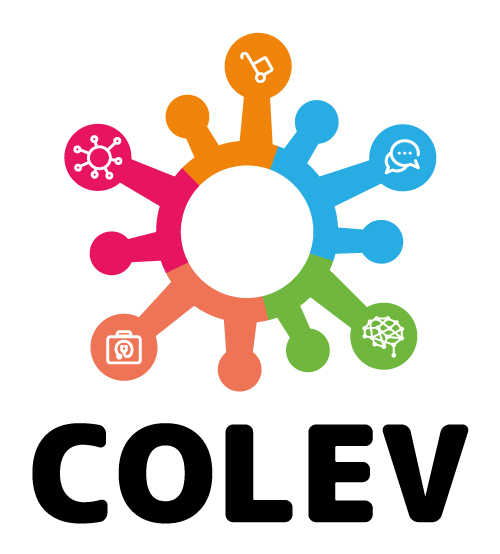Our aim is:
To produce and communicate relevant evidence on public health measures in order to address the challenges related to COVID-19 in Colombia, adapted to regional contexts and vulnerable populations, through the rigorous, interdisciplinary, and ethical use of artificial intelligence and data science.

Decisions and data
![]()
To identify health ecosystem stakeholders' preferences and perceived needs regarding AI and data science, and their use in decision-making, relative to other forms of evidence in response to COVID-19.
Research questions
-
What are decision-makers' preferences and perceived needs for AI and data science in response to COVID-19, taking into account technical, ethical, and social aspects of its use?
- What are the barriers and facilitators to the use of data science and AI in health system decision- making on COVID-19, in different local health system contexts and applications?
Expected results
-
Summary of stakeholder preferences and needs regarding Artificial Intelligence and Data Science in response to COVID-19, including type, format, and communication approach.
-
Analysis of barriers and facilitators when using Artificial Intelligence and data science to inform decision making in COVID-19.
-
Lessons concerning the key characteristics of the national and local sociotechnical systems that are relevant to supporting the use, in practice, of AI and data science to inform public health decision-making in response to COVID-19.
COVID-19 models
![]()
Develop a long-term and real-time mathematical model specific to Colombia that allows the prediction of COVID-19 cases, ICU occupancy, and deaths; and that compares the impact of possible interventions and resource allocation.
Research questions:
- What are the possible disease trajectories, and the uncertainty associated with each trajectory?
Expected results
- A Dashboard incorporating real-time forecasting of cases, ICU, and deaths using mathematical models or Deep learning algorithms.
-
A Dashboard incorporating real-time forecasting of cases, ICU, and deaths using mathematical models or Deep learning algorithms.
-
A methodological document describing the methods for the development, adjustment and calibration of a real-time forecasting methods.
-
Document evaluate the effectiveness of contact tracing where mass testing is done to identify people who may have been exposed to an infectious disease and target interventions in this high-risk group.
COVID-19 and health operations management
![]()
Assess the impact of COVID-19 on the provision of other health services and its effect on resource management policies for health ecosystems.
Research questions:
-
What is the effect of COVID-19 on other infectious, chronic, and mental health outcomes?
-
What is the differentiated effect of COVID-19 with regard to gender differences and vulnerable regions?
-
What is the impact of COVID-19 related restriction on sexual, gender-based and domestic violence, and adolescent pregnancies?
-
How to improve resource management in the health ecosystems incorporating different efficiency criteria?
Expected results
-
A selection of health-related outcomes mainly related to COVID-19 by region, gender and vulnerable population.
-
A description of the service process with the physical, technical and human resources involved, for the selected health-related outcomes affected by COVID-19.
-
Identification of Morbidity clusters and networks associated to several health problems both before the COVID-19 pandemic and after the lockdown measures.
-
Guidelines to improve the use of human, physical and technical resources.
Social media and COVID-19
![]()
Characterize the public online conversation about COVID-19 by analyzing popular social networks with artificial intelligence methods.
Research questions
What are the COVID-19-related trending or viral topics in social networks?
What are the reactions to policies or events of social importance related to COVID-19 in Colombia?
Who are the key users, profiles, or accounts that act as "super-spreaders" for information, disinformation and misinformation?
Expected results
Identification of the key agents and "super spreaders" of information, disinformation and misinformation.
Real-time detection of trending topics and reactions related to COVID-19 in Colombia.
Dis and misinformation museum
![]()
Design a disruptive communication strategy adapted to different social groups to deal with misinformation around COVID-19, and our local and national public health measures and policies.
Research questions
What are the key variables in the data related to mis and disinformation around COVID-19 to gain insights to act by implementing a dynamic communication process?
How to tailor a strategy to combat misinformation and disinformation about COVID-19 considering specific societal groups including vulnerable communities?
Results
A blueprint of a disruptive communication strategy with functional prototypes of every stage of the process.
- Digital discourse analysis of social media data assisted with ML tools; Identifying findings and insights that allow to properly characterize the problem identifying sources, spreaders, claims, scales, and formats.
- Visualization of digital discourse analysis of social media data including mis- and disinformation spread dashboards to communicate with media platforms.
- A series of workshops with media from the public sector, traditional media leaders, and digital media key practitioners. They share the information using data journalism storytelling with stakeholders, media platforms, and institutions to implement the counter disinformation strategy.